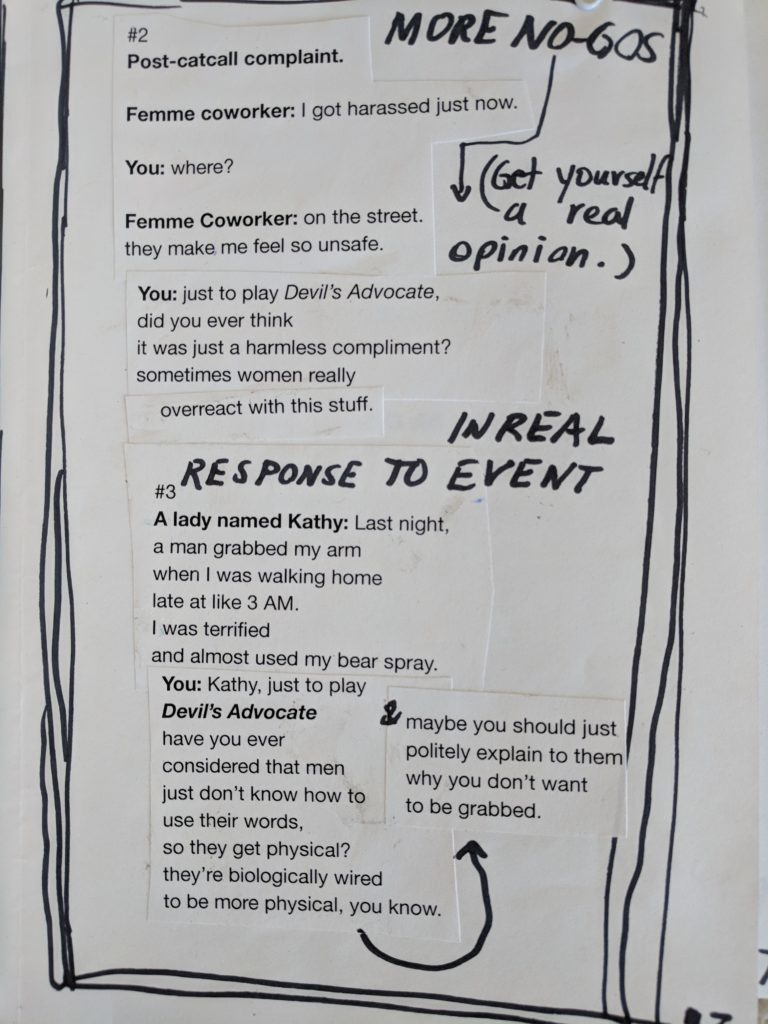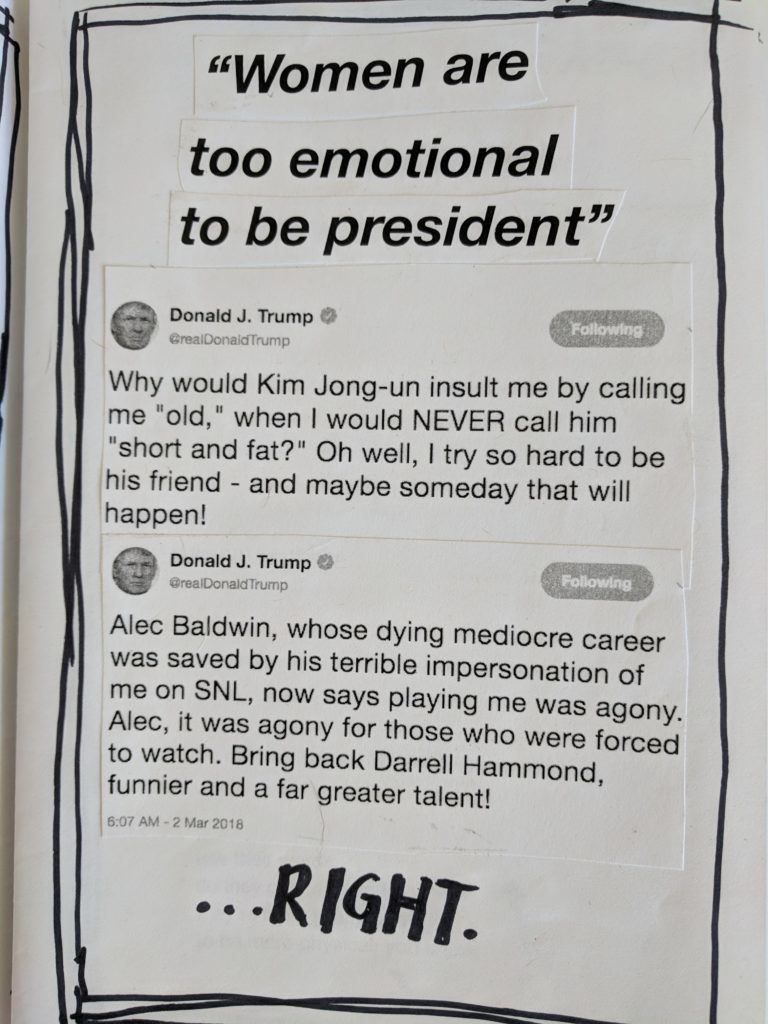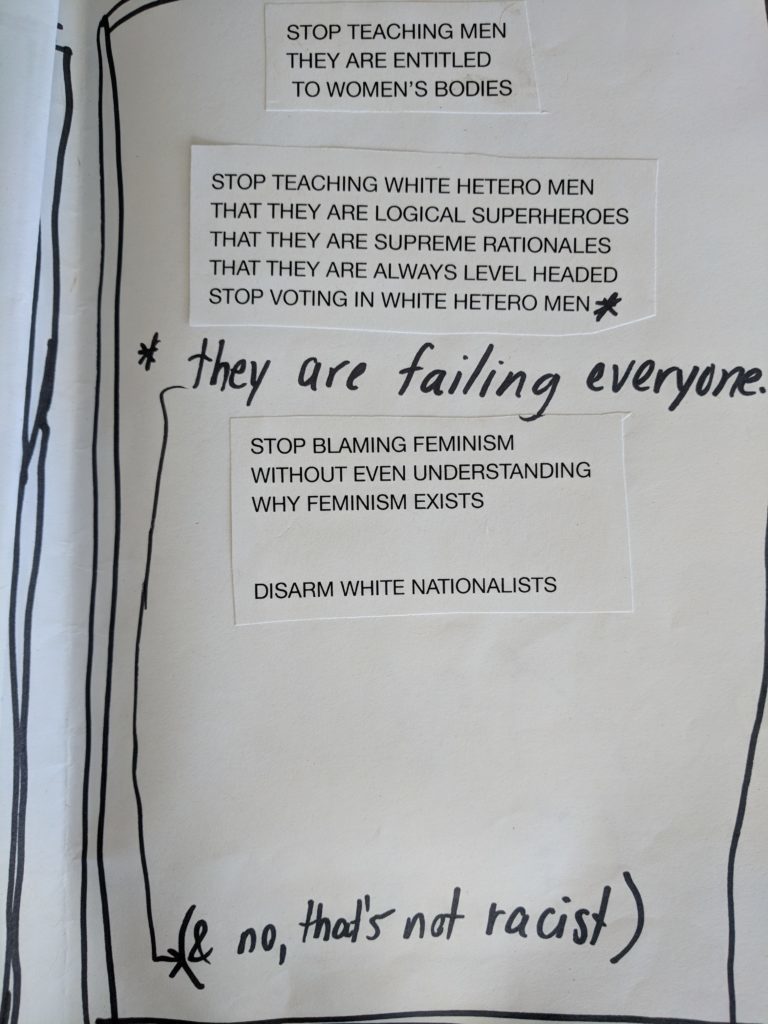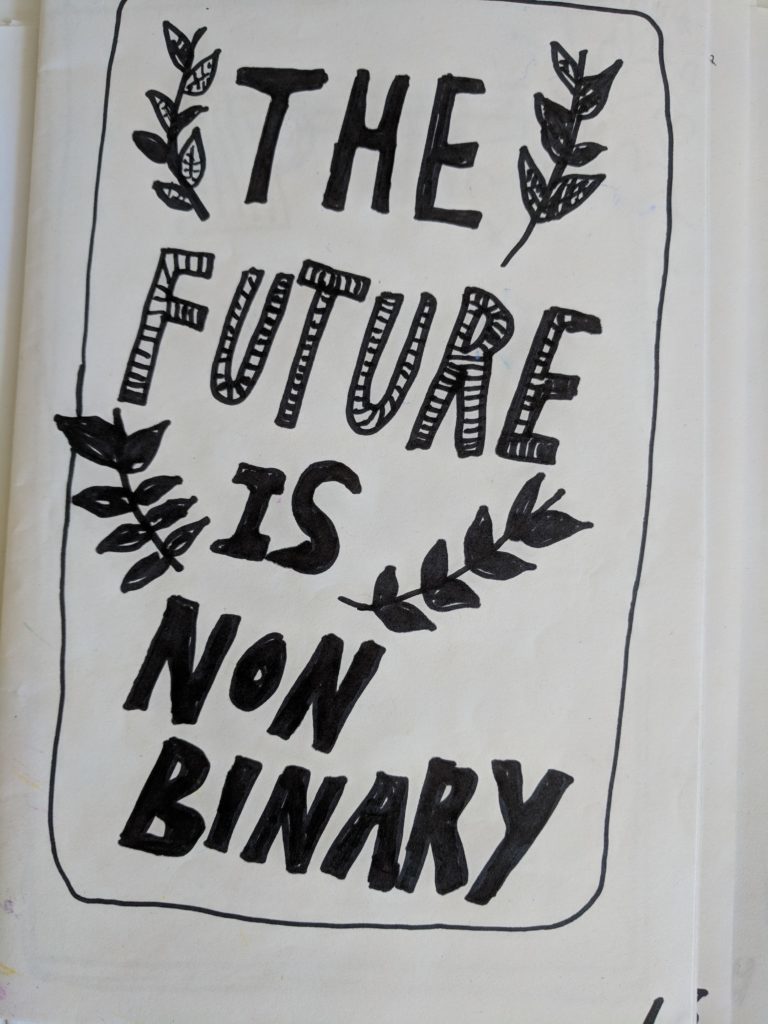by Jaina Kelly
It is powerful and necessary to tell stories. The representations of characters within the stories we tell is also a powerful element that must be understood deeper. In a cultural landscape where a vast majority of adventure stories feature men as the main hero or protagonists, where can young girls find the independent strength and determination to conquer life’s challenges?
*Throughout this piece, I will share several sections from my personal zine creations.


The earliest women’s suffrage movement depended upon the publication of a “widespread and innovative print culture” (Groenveld, 5) which influenced women’s ability to participate further in a male-dominated landscape. This meant that by transforming previously oratory knowledge into accessible print-based means, women were able to start impacting government policy, documenting their movements as a larger group, and to tangibly build a following that could be quantified through readership (5).
Drüeke and Zobl claim feminists have “long recognized the importance of self-managed, alternative media” (11). They understand this term “feminist media” as any self-identifying feminist or women’s centered media project based around a desired process of social change. Therefore, feminist media in this broad context can include things like zine production, flyers or websites, and expands to include graffiti or performance art. Their research explores the cultural citizenship behind the creation of feminist media.
In their book, they seek to understand how feminist media producers engage in “participatory spaces, networks and cultural citizenships” (1). (Zobl, Reitsamer & Grünangerl) note that these participatory spaces have been used both individually or collectively “to inform, motivate, and mobilise political action on behalf of women, as well as to critique the structures and content of dominant media” (21). Without the creation of alternative options, dominant media would be the only source of representation for women. This could lead to even further obstacles for developing feminist mobilizations, as without representation, it is difficult to understand where your place is within society.


The creation of a feminist participatory space develops friendly creative space where women feel empowered to express themselves safely, specifically without the scrutiny of a gender-based discriminatory response. With my own zine creations, I found freedom in artistically expressing opinions that might put me at risk to violence or retaliation online. Having the option to be creative in a safe space offers a release of energy, tension and fear. It opens up the door to connect with my truth and my needs.
References
Drüeke, Ricarda and Zobl, Elke. (2012) “Feminist Media, Participatory Spaces, Networks and Cultural Citizenship.”
Groenveld, Liz. (2016) Making Feminist Media: Third-Wave Magazines on the Cusp of the Digital Age. Waterloo: Laurier Press.
